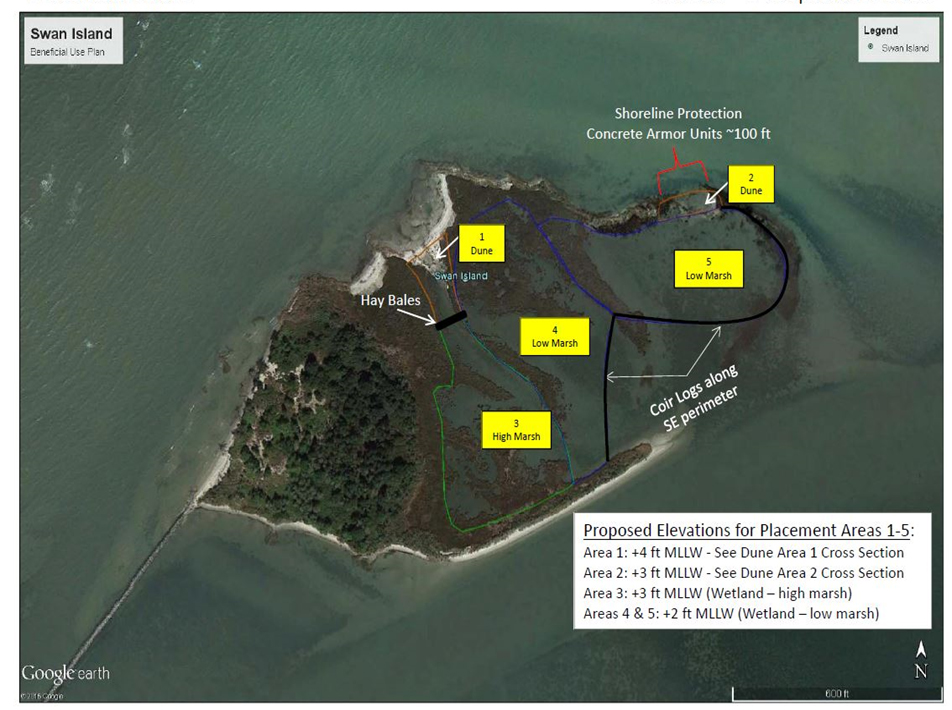We are assessing how the effort to restore the footprint of Swan Island in Chesapeake Bay with dunes and dredged sediments is affecting ecosystems that surround the island and the long-term resilience of the island to erosion and sea level rise.
Why We Care
Marsh islands in the Chesapeake Bay are disappearing due to the cumulative effects of shoreline erosion, subsidence, inadequate sediment supply, and sea level rise. In addition to providing habitat for estuarine organisms, many of these islands are valued for their role in shielding adjacent developed shorelines from waves; their loss leaves the developed shorelines more vulnerable to flooding and erosion. One proposed approach for preserving the protective benefits of degrading islands involves the use of dredged sediments to restore the islands back to their native condition.
What We Are Doing
In October 2018, the Baltimore District of the U.S. Army Corps of Engineers began dredging the navigation channel that runs between Swan and Smith Islands in Chesapeake Bay. Approximately 70,000 cubic yards of the dredged sediments were used to restore the footprint of Swan Island. The restoration plan included creation of dunes and high and low intertidal marsh. The creation/expansion of these habitats is expected to have significant benefits in terms of ecosystem service provision, increased resilience of Swan Island to future sea level rise, and abatement of erosive losses for the town of Ewell, Maryland, on adjacent Smith Island.
NCCOS scientists are partnering with researchers from the U.S. Fish and Wildlife Service, the Maryland Department of Natural Resources, and the U.S. Army Corps of Engineers to collect the physical and ecological data necessary to evaluate whether the project objectives are being met. Specifically, we are assessing the impacts of Swan Island restoration on nearshore benthic communities (oysters and seagrasses), intertidal marsh habitat, and long-term resilience of the island to erosion and sea level rise.

Benefits of Our Work
Data collected for this project will directly address current information gaps surrounding both the impacts of island restoration activities on surrounding ecosystems, and the protective benefits provided by these islands. The products developed through this project will inform the design and placement of future island restoration activities and be used by regulatory agencies involved in permitting island restoration projects. Specific products include a technical report that synthesizes results and evaluates the efficacy of island restoration for coastal protection, public information and outreach documents developed in conjunction with the Maryland DNR and NOAA Office of Coastal Management, and hydrodynamic and ecological habitat models that will be used to evaluate the performance of this and other projects nationwide.
Island Restoration to Meet “Triple-Win” Engineering With Nature® Outcomes Presentation


